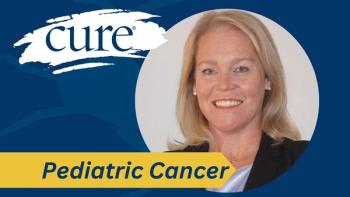
Updates in Shared Decision-Making in Lung Cancer Following ASCO 2025
Key Takeaways
- Informed and shared decision-making is essential in lung cancer treatment, emphasizing clinical trial participation for advancing therapies.
- CheckMate 816 study showed improved overall survival with neoadjuvant chemotherapy and immunotherapy in resectable NSCLC.
Treating patients with lung cancer always calls for a focus on informed and shared decision-making, according to expert oncologists.
Treating patients with lung cancer always calls for a focus on informed and shared decision-making, according to Dr. Eric Singhi. He added that discussing potential clinical trials is also vital for this patient population; their bravery for participating in a clinical trial leads them to receive tomorrow’s treatments today, as well as advance science for future patients.
Singhi sat down for a conversation with our host, Dr. Joshua K. Sabari, in which,
Singhi is an assistant professor in the Department of General Oncology and the Department of Thoracic/Head and Neck Medical Oncology in the Division of Cancer Medicine, at The University of Texas MD Anderson Cancer Center, in Houston. Sabari is the editor in chief of CURE. He also serves as an assistant professor in the Department of Medicine at NYU Grossman School of Medicine and director of High Reliability Organization Initiatives at Perlmutter Cancer Center.
Sabari: Hello and welcome. My name is Dr. Joshua K. Sabari. I'm a thoracic medical oncologist at NYU Langone Health Perlmutter Cancer Center in New York, and I'm also editor in chief of CURE. I'm really excited to be joined by my colleague, Dr. Eric K. Singhi. Dr Singhi, please introduce yourself.
Singhi: Thanks. My name is Dr. Eric K. Singhi. I am a thoracic medical oncologist at The University of Texas MD Anderson Cancer Center in Houston. I am really excited to be here.
Sabari: Eric, thank you. I saw you at ASCO 2025, and what an exciting meeting it was. Tell me, what were some of the abstracts and presentations which were exciting to you? What do you want to impart to the CURE community?
Singhi: Although we didn't have any plenary sessions for lung cancer abstracts this year, there was still very exciting, potentially practice-changing data presented for both non-small cell lung cancer (NSCLC) and small cell lung cancer. The progress [in small cell lung cancer] is a huge win for such an aggressive histology.
Focusing on NSCLC, we saw a really exciting update for patients with resectable NSCLC. These are patients with earlier stages of NSCLC who can undergo surgery to have the tumor and potentially some lymph nodes removed. The update came from the CheckMate 816 study. This study investigated giving a combination of chemotherapy plus immunotherapy before surgery, which we call neoadjuvant treatment. Patients received just three cycles (nine weeks) of chemotherapy and immunotherapy and were compared to patients who received chemotherapy alone before surgery.
We already knew that this combination of chemotherapy and immunotherapy before surgery improved what we call pathologic complete response. This means that when a patient's tumor is removed after surgery, and we examine it under the microscope, we found a higher chance of having no living cancer cells remaining in patients who received the combined therapy before surgery. This was a really important finding. We also knew, even before ASCO 2025, that this translated into improved event-free survival, meaning better disease control with the combined chemotherapy and immunotherapy.
What was truly exciting about ASCO 2025 was the update on overall survival — how long patients are actually living with this treatment strategy. We saw a five-year update, revealing that 65% of patients who received just three cycles (nine weeks) of chemotherapy and immunotherapy before surgery were still alive after five years. This compares to 55% of patients in the control group, representing a 10% absolute overall survival benefit.
I'm really excited about this data. We've been waiting for overall survival data in this setting for quite some time. We have many different options for patients with early-stage NSCLC, which can sometimes be overwhelming and confusing. This data helps us consider a strategy that involves less time, less toxicity, less potential financial toxicity, and offers hope for a real chance at long-term survival.
Sabari: I was also really excited, Eric, to see the five-year update on this trial. As you mentioned, only nine weeks of chemotherapy and immunotherapy, but in clinical practice, what are you doing on a Monday morning where you're sitting there with a patient? Are you offering them just neoadjuvant therapy before surgery, or are you offering them more of a perioperative approach — therapy before surgery and after surgery, historically called adjuvant therapy?
How do you put the updated data from CheckMate 816 into the context of other regimens that we're currently using in clinic?
Singhi: That's a really great question, Josh. First and foremost, I use informed decision-making and shared decision-making with every patient in this setting. We also discuss potential clinical trials that are ongoing. Clinical trials are incredibly important; I'm able to discuss five-year updated overall survival data because patients and their loved ones were very brave and courageous to sign up for a clinical trial. They did so [hoping] for personal benefit, but also to advance science for the future.
So, I start by outlining the different options. We discuss neoadjuvant treatment (treatment only before surgery), the perioperative "sandwich" (some treatment before surgery, then surgery, then treatment after), and finally, the concept of adjuvant therapy (treatment only after surgery). We lay out all three options and discuss them collaboratively.
What was particularly interesting from the CheckMate 816 update was the analysis of patient subsets who might strongly benefit from a neoadjuvant-only treatment before surgery. We observed that patients with high PD-L1 expression (a biomarker indicating how well immunotherapy might work) — specifically, 50% or greater — really benefited from this neoadjuvant-only approach. These patients had a longer overall survival compared to those who received chemotherapy alone. Furthermore, if patients achieved a pathologic complete response, meaning there were no living cancer cells after surgery, they had an incredible almost 95% survival rate looking five years out.
Therefore, informed decision-making, shared decision-making, considering biomarkers that may help guide treatment, and evaluating how well patients responded to treatment all helps us to think about how to put this into clinical context.
Sabari: Yeah, I couldn't agree more. These are really important discussions, shared decision-making discussions with our patients in the clinic.
I want to shift, Dr. Singhi, to the metastatic setting, [looking at] patients with stage 4 lung cancer who harbor common mutations in a gene called KRAS. We know that KRAS makes up 30% of all non-small cell lung cancer, and we've actually done a lot of work and have a lot of progress in a specific KRAS mutation, KRAS G12C, which makes up about 12% to 13% of patients with non-small cell lung cancer.
We have approvals for 2 KRAS G12C inhibitors. What are you excited about? What are your concerns with those combinations?
Singhi: This is a really great question. Lung cancer is considered the “poster child” of precision medicine; we're continuously trying to move our targeted therapies earlier in the treatment paradigm to achieve greater patient benefit. As you very nicely said, Josh, for patients with a KRAS G12C mutation, we don't yet have approval to use targeted therapy in the first-line setting for treatment-naïve patients (those who haven't had prior cancer treatment). Currently, we only utilize it if patients unfortunately experience disease progression on chemotherapy or immunotherapy.
So, the big question is: Can we move some of these targeted therapies into earlier stages of treatment? We saw an update from the KRYSTAL-7 study, which was a phase 2 study that investigated giving one of these oral targeted KRAS G12C drugs in combination with immunotherapy, Keytruda (pembrolizumab). We aimed to assess both its efficacy and its tolerability/safety for patients. We did see some concerns regarding liver enzymes, so careful regulation and close monitoring of this combination will definitely be necessary. However, I did see a very clear and promising signal, especially for patients with high PD-L1 expression (50% or greater). When that oral targeted therapy was combined with immunotherapy, there appeared to be a promising signal.
This was only phase 2 data, remember, which is an earlier phase of clinical trials. It will be moving forward into a phase 3 study to try and answer the question: can we move oral KRAS G12C targeted therapy in combination with immunotherapy into the first-line setting to make a meaningful difference for our patients who have high PD-L1 expression?
Sabari: I couldn't agree more, and this is really an exciting space for a target that has been thought to historically be undruggable. We now have approvals in the second-line setting, and we're rapidly moving these up into the front-line setting. Completely agree with you. However, this is data from phase two trials. We really need phase 3 randomized data, where we test an experimental arm (the treatment in combination with the new medicine versus a control arm).
Thank you so much to our patients and our caregivers for participating in these clinical trials to allow us to better treat the future of folks with lung cancer. I want to thank the CURE, community, patients, family members, and caregivers for tuning in and really want to thank you, Dr. Singhi for a phenomenal presentation. I look forward to working with you in the near future.
Singhi: Thanks, Dr. Sabari. Take care. Good to see you.
For more news on cancer updates, research and education,




